Orders over $50 Ship FREE • Contact Us 888-231-2453
How Often Should I Replace My Bicycle Tires?Typically you will replace your mountain or road bicycle tires when:
1. They are worn out
2. You're not happy with way your bike is performing and you think new mountain or road tires will help.
Reason #1 - SafetyA common question is: How long do Hybrid or Road tires last? The conventional wisdom is that your road bike tires last anywhere from 1,000 to 3,000 miles. High-end (more expensive) tires should last at least 2,500 miles. Racing bicycle tires, which are designed for speed and high-performance, may need replacing after 1,000 miles, but tough bicycle touring tires can last as
long as 4,000 miles. The most common sign that your bicycle tires should be replaced is a sudden streak of flat tires.
Bicycle tires wear with age, too. If your bike is stored your tread will not wear out but your tire can harden and crack with age. If your bike tires are cracking or fraying do not ride your bike until you're replaced your tires. We also recommend when you replace your road or mountain tires you should replace the inner tubes also.
As rubber wears away there is less and less standing between the inner tube and the junk on the road or goat heads on the trail.
There’s a reason tears and tears are spelled the same way. A rip in your tire is often the end of that rubber’s usefulness. If you’re on the road, you can temporarily boot a tear with a folded up dollar bill or the boot included in the Tire Book Patch, but once you get back to home, it’s time to do some shopping and replace that tire.
You can often identify a tear before it’s an issue by checking your tires regularly for bulges. If you see something growing that looks like a tire tumor, there’s a weakness in the rubber and it’s only a matter of time before it tears and your tube suffers a blowout. Replace the tire before your next ride or you might have the other tears which we would hate to see you have.
If you see something growing that looks like a tire tumor, there’s a weakness in the rubber and it’s only a matter of time before it tears and your tube suffers a blowout. Replace the tire before your next ride or you might have the other tears which we would hate to see you have.
When it gets to the point that every stray piece of glass, rock, etc… is costing you a patch it’s probably time to make a change. Before installing your new tires keep in mind you can install tire liners which help prevent flats.
Reason # 2 - Controlright bike tires for your bicycle, the first thing to know is what size you need. To determine this, simply look at the side of your tire where you'll find a size marking or a tire label with the tire size on it. Common sizes include 26 x 1.5; 26 x 2.0; 700 x 25c or 29x 2.35. There are many tire sizes so be sure to write it down before ordering on-line or going to your local bike store.
When you replace your mountain or road tires, you must match diameters, so if you have 26-inch wheels, only 26-inch tires will fit. You can usually change widths, for example, switching from a 26 x 1.5 tire to a 2.0 model puts you on a wider tire that holds more air, which you might like for more comfort, traction and control. Conversely, someone who road rides might switch from 700 x 28c tires to 23c tires to save a little weight for easier climbing and faster acceleration. While, if you were suffering frequent flats and a rough ride on narrow tires, you'd benefit by switching to wider tires for more control and comfort
You can usually change widths, for example, switching from a 26 x 1.5 tire to a 2.0 model puts you on a wider tire that holds more air, which you might like for more comfort, traction and control. Conversely, someone who road rides might switch from 700 x 28c tires to 23c tires to save a little weight for easier climbing and faster acceleration. While, if you were suffering frequent flats and a rough ride on narrow tires, you'd benefit by switching to wider tires for more control and comfort
Keep in mind that not all rims and bike frames accept all possible tire widths. Usually going up or down one or two widths will work. If you're considering a big jump up or down contact us to get recommendations.
Reason #3 - Peace of mindWe often get asked should I rotate my Mountain or Road Bicycle Tires?
Your rear tire will likely wear at a much higher rate than your front because a majority of your weight is on the back wheel and it’s responsible for your acceleration and drive. That means you’ll probably need a new rear tire long before you need a new front tire, so let’s talk tire rotation.
That means you’ll probably need a new rear tire long before you need a new front tire, so let’s talk tire rotation.
You never want to put a worn tire on your front wheel. I know it’s tempting, but your front tire’s traction is responsible for your steering and braking. Can you imagine losing traction and crashing? (Ouch). Losing traction on your rear wheel is much easier to save and you just look like you were doing a sick whip skid. So, if your rear tire’s worn but your front’s in decent shape, you can move your front tire to the rear, buy one new tire and pop it on your front wheel! You’re good to go!
If you are a mountain biker for example, mountain bike tires will probably cost between $30-99 USD. Keep in mind, there are numerous tread patterns, widths, wheel size variations that you have to be aware of. It's the same for road bike tires there are tires that have flat protection or puncture resistance available which typically will cost more but well worth every penny.
Fortunately, manufacturers have pulled out all the stops to provide excellent bicycle tires for all purposes. From built-in armor for puncture protection to supple casings that conform to the road surface for incredible handling, to dual-compound tread that's durable on top for long wear and sticky on the sides for grip, today's tires offer an impressive array of features and benefits. Manufacturers like Maxxis, Giant, Continental, WTB, Schwalbe, Surly, Serfas, Kenda and Tioga and many more have spent years developing strong, durable and reliable tires.
Now, pop on that new tire and tube because miles of adventures are waiting for you. It's Your World, Ride it!
We want to make sure you have all the information you need to select the correct size and model. If you have any questions or would like recommendations please contact us at [email protected].
If you enjoyed this article share it with a friend and leave us a comment.
Shop Tires
Back to blogReach us Monday-Saturday 9-6 PST
Store Hours: Tuesday-Saturday 11:00 am - 6:00 pm
Find a Bicycle Warehouse Store Near You!
1 / of 4
View all
Your cart is empty
How often should you change bike tires? This is a question many cyclists get asked at least once in their lives. It’s a common enough question, but there are no definite answers that will suit everyone. How often you should change your bike tire depends on several factors including where you ride, and what kind of riding you do. So I have decided to answer your question along with the factors, signs, and many more related questions. So let’s don’t be late anymore and jump to know why we are here.
It’s a common enough question, but there are no definite answers that will suit everyone. How often you should change your bike tire depends on several factors including where you ride, and what kind of riding you do. So I have decided to answer your question along with the factors, signs, and many more related questions. So let’s don’t be late anymore and jump to know why we are here.
It depends on many factors How often you should change bike tires. We will discuss those factors below, but before that let’s know the average time of replacing the bike tires.
Whether it’s a road bike, touring bike, racing bike, mountain bike, or motorcycle tire, the average lifespan of a tire is 2,000-3,000 mileage. It means if you are not using any high-end road bike tires or mtb bike tires, you have to replace them before you ride over 3000 miles. Don’t be relaxed and wait for running 2,000+ or almost 3,000 miles, it doesn’t end here,
There are some more things you should keep in mind apart from the number of miles you ride. If the tire has signs of replacement like no available tread, wear & tear, sidewalls cut, rubber cracks, low performance, etc. the tires need replacement. We will discuss the signs below.
If the tire has signs of replacement like no available tread, wear & tear, sidewalls cut, rubber cracks, low performance, etc. the tires need replacement. We will discuss the signs below.
One more thing, if you are not a regular rider but have a bike and didn’t ride it 1000 miles in five years let alone 2,000, still you should replace them. Yes, you need to replace the tires at least once in 3 years and always have to keep them pumped up. No matter if you ride it or not, you have to follow this.
So if the bike or bicycle tires have no sign of tread wear and don’t yet run for 2000 miles, you won’t need to replace them anytime soon. Wait to see the signs or until you ride with them at least 2500 miles.
Why You Should Replace The TireA bike tire is not just a piece of rubber that you use to accessorize your bike. It is an important part of the bike and must be maintained properly in order to last longer and be a safe and secure ride. A tread worn-out bike tire can also affect the ride by making it difficult for you to balance and control the speed. If the air pressure in your tires is too low, they will not grip the road properly and this could result in an accident as well.
If the air pressure in your tires is too low, they will not grip the road properly and this could result in an accident as well.
Replacing a tire when it has less than 1/4 of its pressure can reduce stopping distance by as much as 25%. If the bike tire doesn’t have enough air in it, it could result in damage to your bike or even cause an accident.
Over time, the tire’s tread wears out making noise, and may even move around a little bit. This will affect how you handle the bike. Its handling could be affected due to vibrations felt through your handlebars. And when you roll off the rim or get flung from its grip on your bike, you may injure yourself, because of its damaged state.
Factors That Impact How Often You Should Change The Bike TiresHow long road bike tires or mountain bike tires can last depends on some factors. It’s not only about how many miles it ran or tread wear & tear. It depends on the tire quality, tire types, tread thickness, rider weight, riding style, riding pavement, and maintenance.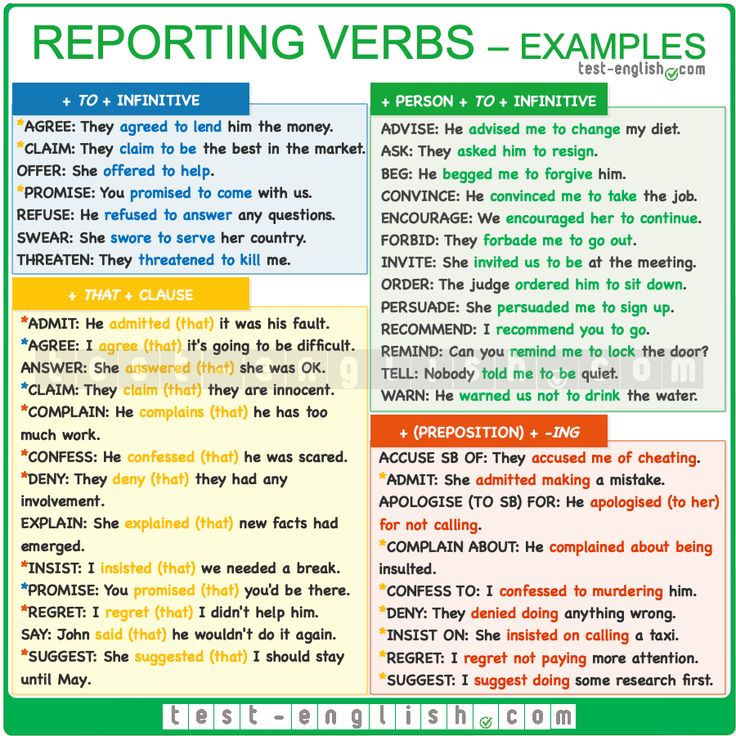 So if a cyclist wants to make the best use of the bike tires he should know them. Let’s know a little more about these factors that decide how long a bike tyre can last.
So if a cyclist wants to make the best use of the bike tires he should know them. Let’s know a little more about these factors that decide how long a bike tyre can last.
Type of tires
Different types of bikes have different types of tires. An example, a road bike has a thinner tire and a tread that makes a road bike ride more smooth. The narrow tires are lightweight and can provide more great performance but they aren’t sturdy enough, a little sharp object is enough to damage them. And they can roll easily with speed but are more likely responsive with frequent punctures. Remember when you face more flats, it means the tire needs replacement.
Unlike a road bike, a mountain bike tire doesn’t run faster and face frequent flats or punctures so easily. MTB tire is designed to run slowly, have puncture resistance, and can be ridden over any type of pavement. So a mountain biker can handle any surface on any condition without facing small punctures so often.
As a result, road bike tires need to be replaced faster than mountain bike wider tire.
Tire Pressure
Another factor that determines how long a bike or bicycle tire can last is tire pressure. Higher pressure tires ride better, and grip more pavement but also increase the risk of potentially blowing out from shocks or potholes. But when you use lower pressures, they’re easier to go through corners like smooth turns, and obstacles than riding over mixed surfaces and at high speeds.
Medium pressure does not interfere with performance too much. If you play in very soft terrain for decades and always keep the pressure low you may need tire replacement but that is a rare case.
How You Ride
Getting versatile and wanting to try riding over different trails with a different style is every rider’s dream. But remember if you want to try different stunts like wheelies, skidding, or stoppies, the bike tires will wear faster. The tread will face wear and tear, and after a period, it will be visible. One more thing, never ride underinflated tire. Riding without inflating the tires properly will cause sidewall pinch and affect the rim strip. As a result, there will be pinch flats.
One more thing, never ride underinflated tire. Riding without inflating the tires properly will cause sidewall pinch and affect the rim strip. As a result, there will be pinch flats.
Where You Ride
The lifespan of a bike or bicycle tire also depends on where you ride. If you ride a road bike on smooth surfaces it will run faster and more. But if you ride over gravel or rough pavement, the tread depth will face wear and tear faster. While you do mountain biking over the same pavement you can do it without being worried about tire lever. MTB tire width won’t give you a faster ride but will ensure a safe ride.
Maintenance
A tire is an important part of a bike. A properly inflated and well-maintained tire will last a long time, whereas a poorly maintained or overinflated tire will damage earlier. Getting a puncture or having any kind of leakage means that the tubeless tyres need sealant and repair immediately. Failure to repair will lead either to an unexpected flat or fatigue failure, which can also cause tire tread and serious damage at best.
The tires have become old or the sidewalls are getting discolored? Thinking about replacing them? I am sure you have too much money that’s why you want to waste them buying a new pair of tires. Just because the road tire or mtb tires are old or discolored doesn’t mean you need to change them. If you can ride with them without facing any performance problem these are enough to be your companion for a few miles more. So exactly when you should think about replacing the tires? Not before you have ridden 2000+ miles or have noticed any sign of replacing. What is the sign of tire replacement? Let’s know.
Sign 1 – The Suction feels high. This usually occurs when the inner tube or spare tube is not inflated properly or has lost even a little amount of air. To know if you have to replace the bike tyres, look at it from end-to-end in both tires for tire wear indication. If there is any deflating you can see, whether fast or slow pace, this could be an indication for replacement.
Sign 2 – Road vibration is a good indication of tire replacement! Even if the outer material looks well maintained and it seems you can ride 1000 miles more without any problem, still consider it as an indication. Because road vibration should never go unnoticed.
Sign 3 – Uneven Pavement Wear is a good indication of tire replacement. This can be observed when you load up some speed or braking. The mountain bike tires get stuck somewhere in this top layer thus creating an uneven wear patch or edge at its corner. This will lead to faster air loss leading to not just uneven wear patches but also wrinkles.
Sign 4 – If you feel even a slight bounce while driving or having a street ride, it means the rear tires need a replacement! If you feel a very tight curve, while making turns, riding at high speeds, braking sharply, or even dropping off the bike then check immediately, these too are signs of wear.
Sign 5 – Sometimes during good weather or warm days the stem gap (distance between rim and tire) gets opened out too much. If you face this on long rides a bit above normal speed such as 125-160km/h with the high load, it’s another indication the bike tire needs replacement.
If you face this on long rides a bit above normal speed such as 125-160km/h with the high load, it’s another indication the bike tire needs replacement.
Replacing a tire is an important task that you need to complete if the bike or bicycle tires are damaged or worn out. Tire replacement in time not only saves money but also reduces the overall fuel consumption.
Here are some of the more benefits of replacing a bike or bicycle tire:
Comfortable: Replacing a tubeless tire will make a ride more comfortable and enjoyable by providing better traction. It also improves handling and increases the lifespan of the bike.
Reduce Rolling Resistance, and Stopping Power: A replaced tire is lighter than the original old tires because it does not have to carry as much weight. Replacing the tires on your bike can help you gain more speed and traction on smooth roads. It also ensures great stopping power whenever you need it.
Smoother Ride: Bike riding is one of the most popular forms of transport.
Replacing the tire on your bike will make the ride smoother by reducing friction from your moving parts against the ground and other sharp rocks that you might hit.
Prolong the bike life: A bike tire is the rubber layer that covers the rim of your bicycle wheel, which helps you stay on your bike when riding it. When you replace your old tread wear indicator tires with a new one, it can increase your riding speed up to 50%. A good tire change can also help keep you safe on the road.
Avoid flats and increase safety on the road: Replace the old tire with a new one and make sure that it is inflated to the correct pressure. If you want your motorcycle tire to be more stable when riding, use a fender as well.
The reason why replacing a flat tire can avoid flats and increase safety on the road is because if you have an air leak in your tire. So, there will be less friction between the rim and tire which will lead to more wear on the bike rims.
So, there will be less friction between the rim and tire which will lead to more wear on the bike rims.
Exercise and Fun: Replacing the tire will increase the fun and enjoyment you get from riding a bike because you will feel more confident and safe on the road when the tire has been replaced with a new tire.
How To Replace The Bike TiresMost of the riders know how to replace road bike tires or mountain bike tires but many of them don’t know the trick of replacing them.
What is the trick? Replace the front wheel with a new one. Surprised?
When the rear tire needs replacement and the front tire is absolutely fine, why I am telling you to replace the old front tire?
Well, all of us know that the front tire doesn’t face wear and tear and never gets a damaged or flat spot.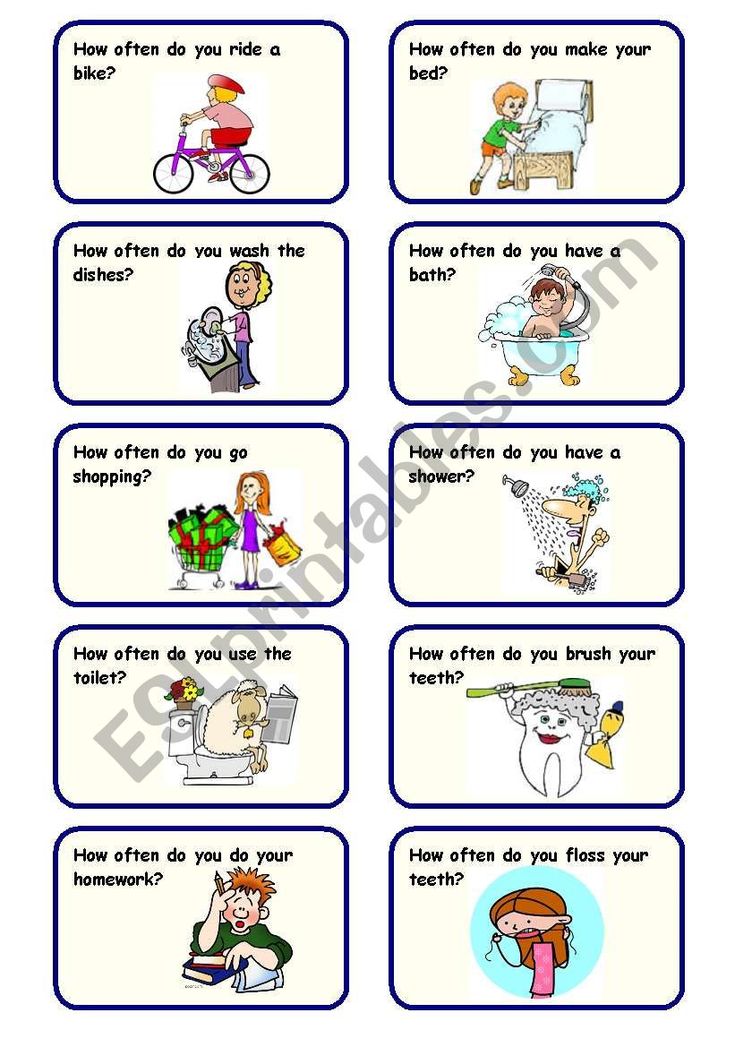 Due to this reason, we never got a chance to change the front tire. And due to being used for a long time, it gets degraded.
Due to this reason, we never got a chance to change the front tire. And due to being used for a long time, it gets degraded.
Maybe now you think you can change the old front tire with a new front tire, why replace it with the back wheel? Yes, you can do it but that will be one kind of waste. To avoid this waste some riders use the trick. They change the back tire with the front one and get a new one for the front. This will continue forever. Whenever the road tires or mtb rear tire gets damaged, replace them with the front tire and follow the same procedure. Like this, the front tire will be used and get damaged and get replaced without doing any waste.
Be alert always, when the signs of replacing the bikes are showing up replace the tire, or after the average mileage if you feel low performance, change the tires immediately. Because not replacing the tire on time can cause problems for you.
We have also discussed the problems you can face due to not replacing the tire on time. And if you are thinking about the tire replacement cost, I can give you an idea of how much a bike tire costs. Read the article to know more about the new bike tire replacement cost.
And if you are thinking about the tire replacement cost, I can give you an idea of how much a bike tire costs. Read the article to know more about the new bike tire replacement cost.
The lifespan of a bike tire is highly dependent on the rider. If you are riding more than once a week, your tires will last about 1-2 years before they need to be replaced. However, if you ride less than once a week, it can last up to 4 years before needing replacement.
This is mainly due to how much you use the bike and how well it is maintained.
How do I know if my bike tires need replacing?When the rubber in a tire starts to wear out or show you other signs or replacement, or the bike is ridden almost 3000 miles, you should understand the tires need replacement.
How long do unused bike tires last?Usually, you shouldn’t ride a bike with 5-year-old tires. But according to the manufacturer, unused bike tires can last up to 6 years.
But according to the manufacturer, unused bike tires can last up to 6 years.
The average cost to change the tires will be between $50-$250. Check out our guide on how much a bike tire costs, to know more.
Are 5 year old tires safe?Absolutely not. No matter you have used or not used, 5 year old bike tires are not safe to use. You shouldn’t ride a bike with old tires that age more than 3 years.
ConclusionI know you have already got your answer, I have shared all you need to know about replacing a new set of tires. Now you know how often you should change the bike tires and related details. If you have something more to know, ask me through the comment. I am always ready to share my knowledge about mountain biking with you.
Unfortunately, not every bicycle tire is able to cover its entire resource.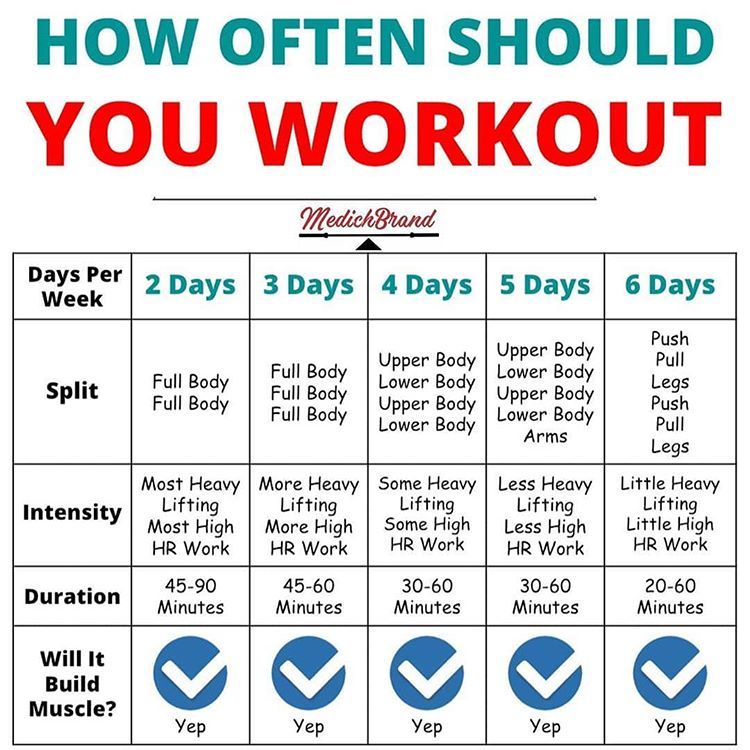 And again, unfortunately, there are many reasons for this. A worn out tread, for example, on MTB tires, is not a universal way to assess wear, although it is one of the main ones.
And again, unfortunately, there are many reasons for this. A worn out tread, for example, on MTB tires, is not a universal way to assess wear, although it is one of the main ones.
However, there are also tires without a toothy tread - road slicks, for example - what to do in this case, how to understand when to change tires?
Just about. Let's figure it out.
By the way, if you think we missed something, please share your thoughts on our Facebook page.
Perhaps the most frustrating thing is to replace a tire due to its damage during a collision with a curb, tree roots or something similar. So both a new tire and a new rim can go to the trash.
In most cases, the camera is broken if you have one. A so-called snake bite is formed, after which the camera cannot be repaired. It occurs during severe deformation when hitting an obstacle, when the tube is clamped between the tire and the rim. And it's good if only the camera is damaged.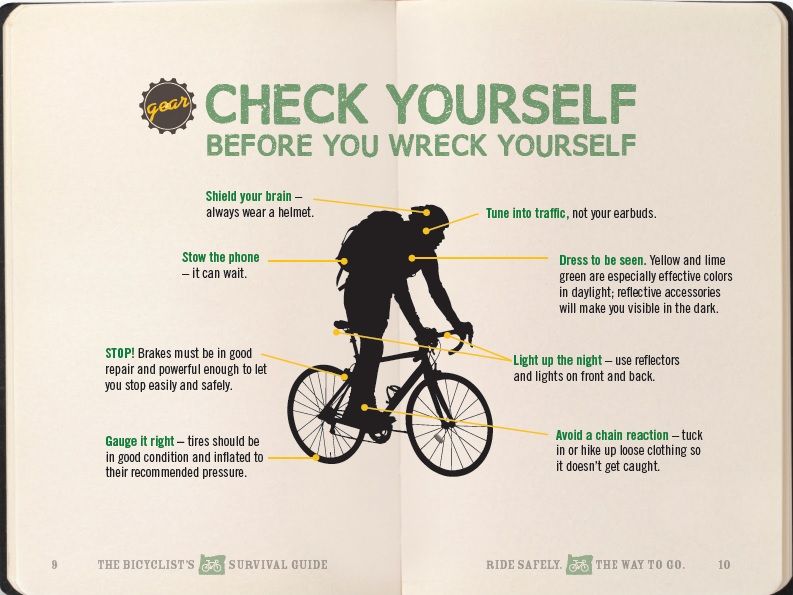 In some situations, the rim does not withstand, it bends, cracks, its edges are jammed, the spokes shoot out or weaken ...
In some situations, the rim does not withstand, it bends, cracks, its edges are jammed, the spokes shoot out or weaken ...
And, since we're talking about tires here, it's worth mentioning the damage to them. Impact on them by the rim entails the destruction of the inner layer of rubber and/or cord on the sidewalls. The inner coating of the tire cut by the rim will begin to let air through if it is tubeless. A simple patch, placed from the inside, solves this issue.
The cut cord, unfortunately, cannot be treated. Its damage, most likely to the naked eye, may not be noticed immediately, but it will certainly manifest itself in the future. He convicts himself by the formation of bumps on the surface of the tire. People are trying to repair such a malfunction, but any of the methods does not provide an adequate level of safety during further operation. Here it is better not to “play with fire” and come to terms with the upcoming new thing.
In any case, if you didn’t even get a clear blow to the wheel anywhere, but felt some kind of beating or a clear change in the geometry of the tire in motion, then these are the first (and sometimes the last) bells that something is wrong . It is better to stop and inspect the wheels for various kinds of damage (bumps, protruding threads, cuts, tears, delaminations).
It is better to stop and inspect the wheels for various kinds of damage (bumps, protruding threads, cuts, tears, delaminations).
It is of course possible to prevent unwanted costs. To do this, you need to regularly check the pressure in the wheels of your bike. The lower it is, the higher the probability of breakdown. Excessively high pressure, by the way, can also cause the cord to break or the rim to break. So, don't be zealous. Before inflating the wheels, carefully study all the inscriptions on them, the manufacturer always indicates the recommended minimum and maximum values there.
And yes, side cuts, ply lines and snake bites are more familiar to road bike owners, as the tires are especially thin for the sake of light weight.
Absolutely any cyclist can see the wear of an MTB tire. Everything is simple here - the tread has worn off, which means the tire must be replaced. Moreover, it is not necessary to wait until it is erased to an absolutely smooth state.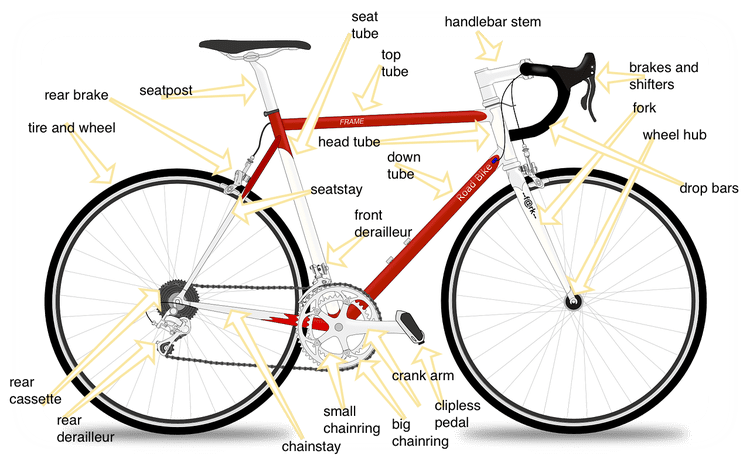 For its native element, such a tire becomes unusable much earlier, when the hook becomes small. If the bike rides in urban conditions, then the lack of a tread does not interfere with the hook, but only has a positive effect on it. After all, the area of \u200b\u200bcontact with the surface of the tire increases. However, other factors are beginning to come into play. Too thin a layer of the treadmill is very vulnerable, there will be more punctures. Even the anti-puncture layer can no longer cope with its task. That is, an MTB tire turned into a slick becomes simply unsuitable for further use.
For its native element, such a tire becomes unusable much earlier, when the hook becomes small. If the bike rides in urban conditions, then the lack of a tread does not interfere with the hook, but only has a positive effect on it. After all, the area of \u200b\u200bcontact with the surface of the tire increases. However, other factors are beginning to come into play. Too thin a layer of the treadmill is very vulnerable, there will be more punctures. Even the anti-puncture layer can no longer cope with its task. That is, an MTB tire turned into a slick becomes simply unsuitable for further use.
However, there are also MTB slicks that come straight from the factory with a smooth tread. It is better to get such tires and fully enjoy the absence of a toothy tread in the city.
How to determine wear in this case?
Good question, which brings us to road tires. Continental, for example, puts special round marks (recesses) on the treadmill. They can be used to monitor the gradual wear of the rolling surface. If they are absent, or their depth has become insignificant, then a replacement is nearing.
If they are absent, or their depth has become insignificant, then a replacement is nearing.
Other manufacturers are following the same path, their marks may differ from each other, but one thing remains in common - they disappear as the tire wears out. By the way, the applied pattern on the sidewalls of a road tire, smoothly passing to the working surface, also plays the role of a wear indicator, although not the most reliable, but still. Rubber after all is erased more in the middle part.
Yes, it is in the middle and often this leads to the formation of a “square” profile, which is also a signal for replacement.
As for MTB slicks, I have never seen such marks on such wheels. I drove until the threads began to climb out or the anti-puncture layer appeared. Different manufacturers have it in different colors, but if you have already seen it (or cord threads), then the next trip should take place just for the tires.
Yes, I have already mentioned them.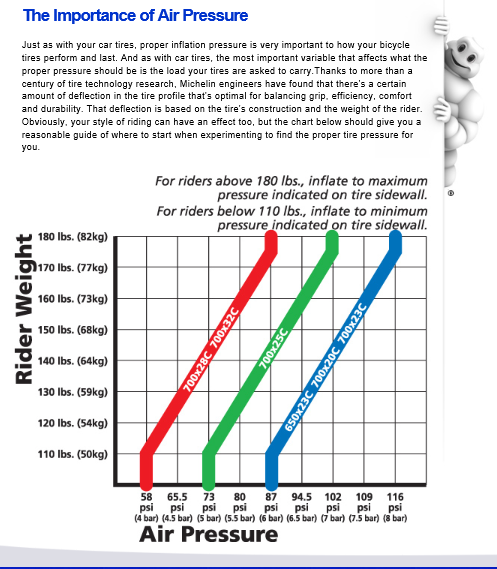 By itself, an ordinary puncture causes some damage to the tire, but is not critical for further use. Of course, we are talking now about minor punctures with thorns, small pieces of glass, self-tapping screws, nails and glasses. No, it didn’t seem to you) there were such cases in practice. In general, there are quite a few items that can attack your rubber, but in most cases this does not happen often. Especially rarely punctures occur in the presence of an anti-puncture layer.
By itself, an ordinary puncture causes some damage to the tire, but is not critical for further use. Of course, we are talking now about minor punctures with thorns, small pieces of glass, self-tapping screws, nails and glasses. No, it didn’t seem to you) there were such cases in practice. In general, there are quite a few items that can attack your rubber, but in most cases this does not happen often. Especially rarely punctures occur in the presence of an anti-puncture layer.
So, if the frequency of punctures has increased and comes from the smallest pieces of glass or pebbles, then this is a clear sign of excessive wear. This is due to the thinning of the working surface of the tire, the only way to correct the situation is to replace it. By the way, even the presence of an anti-puncture layer is not a panacea; with a thin layer of the treadmill, its effectiveness decreases.
The bead is a part of the tire that contains Kevlar fibers or steel wire, popularly called the “cord”, which is fundamentally wrong.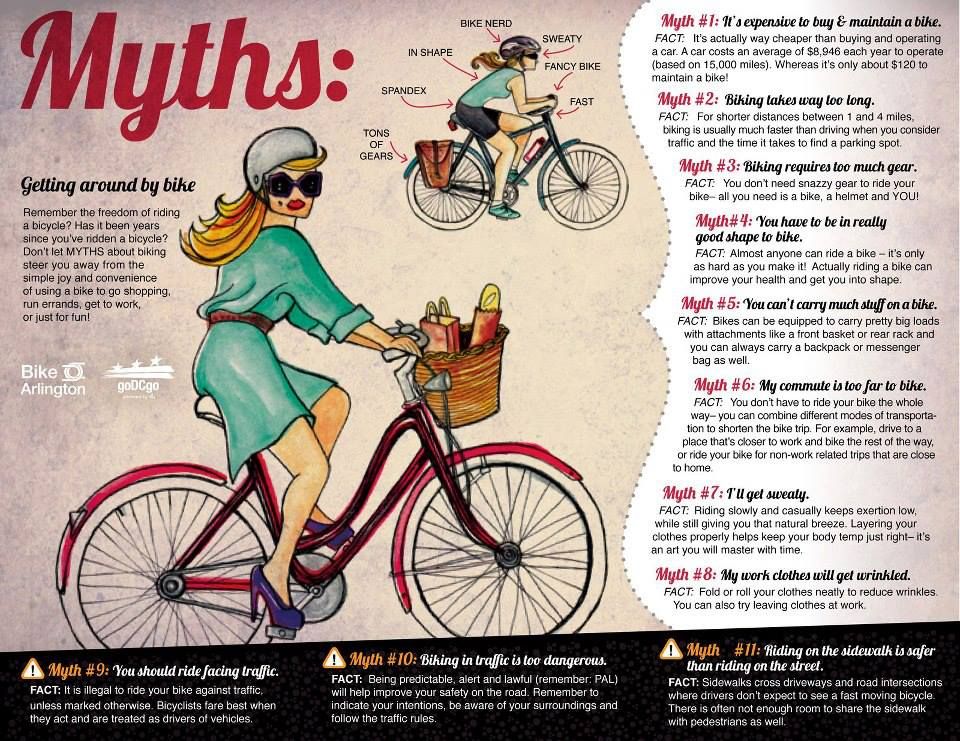 If, when inflating a wheel, the tire comes off the rim, then, of course, there is no point in playing with it, it goes to the scrap, and you go to the store. The point here is the damaged board, which is almost impossible to track visually. Well, if it has obvious damage (rust, for example) or a cut, then there is no need to talk about the applicability of such a tire on a bicycle. I don’t even know if it’s worth saying that such rubber tends to be sorted out in motion.
If, when inflating a wheel, the tire comes off the rim, then, of course, there is no point in playing with it, it goes to the scrap, and you go to the store. The point here is the damaged board, which is almost impossible to track visually. Well, if it has obvious damage (rust, for example) or a cut, then there is no need to talk about the applicability of such a tire on a bicycle. I don’t even know if it’s worth saying that such rubber tends to be sorted out in motion.
All this means that saving on tires is not desirable. They cost no more than money. It also makes no sense to resort to frankly cheap options, since in the end, the operation of a bicycle will cost much more.
We have already mentioned cuts and penetrations of the sidewalls by the rim. And now we want to pay attention to another nuance associated with them. The sidewalls of any tire become unusable when the bicycle is operated at reduced pressure. Of course, if you put a child weighing 15 kg on a bike, then the minimum value can be lowered, but up to a certain limit.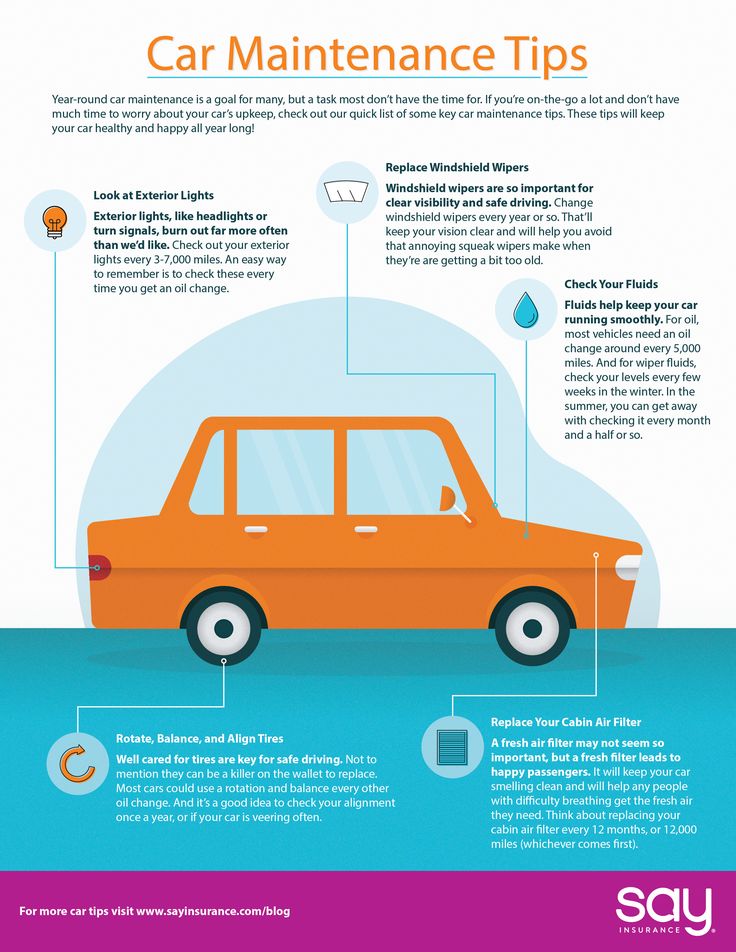 The sidewall should not be excessively deformed, otherwise its gradual destruction and increased wear of the chamber will occur. The latter leads to the replacement of the chamber, since its walls worn into dust will simply tear when trying to pump up after repair.
The sidewall should not be excessively deformed, otherwise its gradual destruction and increased wear of the chamber will occur. The latter leads to the replacement of the chamber, since its walls worn into dust will simply tear when trying to pump up after repair.
The second point about the sidewalls concerns bike storage. So it happens that sometimes the bike stands for a long time without movement and its wheels go down. Prolonged exposure to such a deformation does not bode well, the rubber cracks, the cords are damaged. This effect is especially pronounced when the bike is not stored in a warm and ventilated room. Then the entire sidewall is covered with numerous cracks, and the rubber loses its properties. That is, it makes sense to occasionally visit a bicycle with a pump. At least once a month to keep his wheels running.
The front tire on any bike wears out much more slowly than the rear. Many cyclists prefer not to burden themselves with extra costs and simply move the rear tire forward and the front back.
Well, this seems to be the perfect way. But, alas, it is not.
Installing more worn tires on the front wheel (both highway and MTB) entails a significant change in handling. In road racing, “square” tires are unlikely to behave better in corners than round ones. In MTB bikes, we are talking about a tread, the presence of which on the front wheel is very critical. After all, it is quite simple to deal with a slippery rear wheel, but with the front one it is much more difficult, and more often it is simply impossible.
Full name
Borik Vladimir
Passionate cyclist since 2014. He could not stand it when the bike made extraneous sounds in motion, which made him go over everything, re-grease and renew it many times. He likes to delve into the subtleties, therefore, numerous bulkheads of his bike later turned into a job as a bike mechanic. I went from Shimano Acera to Comance Tomahawk through SLX to XTR to Specialized S Works, and then just switched to a budget road bike on Campagnolo Xenon 10 equipment.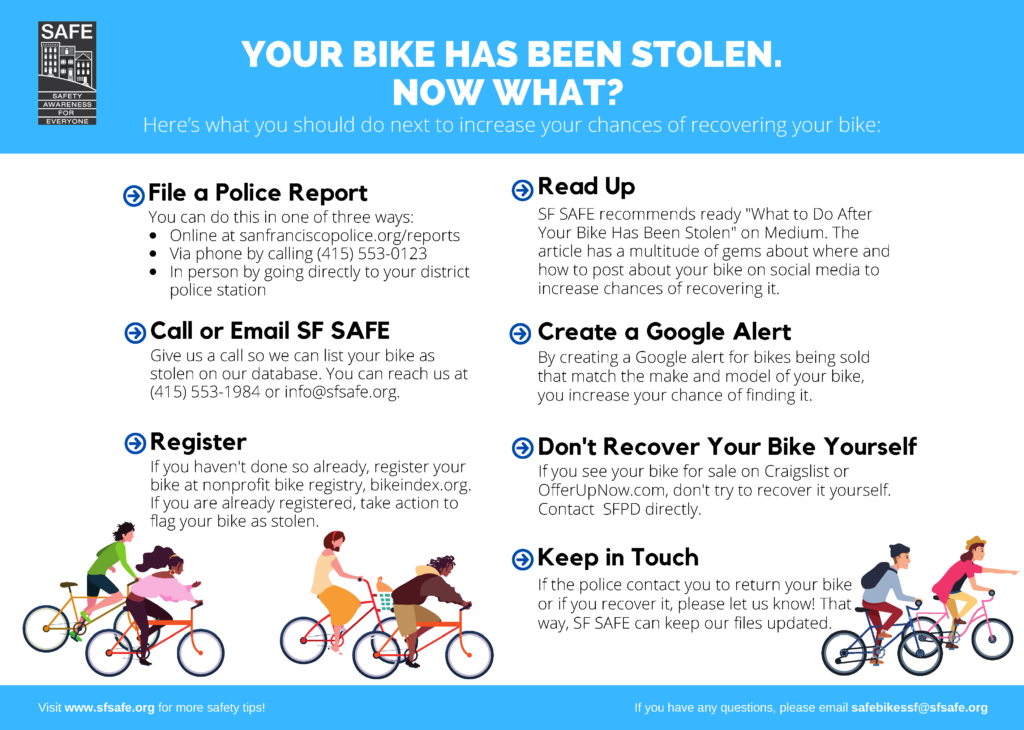 Kuyalnik 2019 bike marathon (MTB) behind-year, where Light took 5th place on the route. Currently remains an active bicycle user and continues to deepen his knowledge in this area.
Kuyalnik 2019 bike marathon (MTB) behind-year, where Light took 5th place on the route. Currently remains an active bicycle user and continues to deepen his knowledge in this area.
My road bike has already covered 500 miles, but unlike cars, I have no idea how often to change tires. It is used under normal road conditions. The forehead of the tire is now smooth.
How do I know if my tires need replacing and how long should I expect the tires to last?
Ged
2012-03-29 21:42:12 +0000
Tire life depends on a number of factors including tire type, weight, driving conditions, front and rear tires, etc. In general, a good set of tires will last a couple of thousand miles.
When a tire is completely worn out, you can usually see threads under the rubber in places. Alternatively, the tire may begin to bloat in patches. In practice, road tires rarely reach this point. Much more often, they begin to accumulate a large number of cuts from glass and other debris on the road. When you start getting a disproportionate amount of flats, it's a good idea to replace the tire (you can use the tire longer, but you'll probably be spending more than the cost of a new tire in tubes).
Alternatively, the tire may begin to bloat in patches. In practice, road tires rarely reach this point. Much more often, they begin to accumulate a large number of cuts from glass and other debris on the road. When you start getting a disproportionate amount of flats, it's a good idea to replace the tire (you can use the tire longer, but you'll probably be spending more than the cost of a new tire in tubes).
prototoast
2012-03-30 13:24:27 +0000
Schwalbe give the following figures for their tires:
As a general guide, you can expect tire mileage between 2000 and 5000 km from standard Schwalbe tires.
Tires of the Marathon family, as a rule, have a length ranging from 6000 to 12000 km. With the lightweight Marathon Racer and Marathon Supreme tires, performance is slightly lower (about 5000 to 9000 km). Marathon Plus has an extremely high mileage of 8000-15000 km.

Useful mileage data for MTB tires is not possible because the influence of driving style is too dominant.
Our Durano and Ultremo racing bike tires last from 3000 to 7000 km.
This page also has some pictures showing tire wear.
SourceTom77
2012-03-2923:39:04 +0000
Change them when they're worn out - either cracks in the sidewalls (due to age, sun and lack of ventilation, possibly exacerbated by poor tire quality) or the rubber in the center becomes paper thinner and you start getting a lot more punctures. The mere lack of a protector is not a problem.
(And it should be noted that in the states of the OP, his tires "go bald" at 500 miles - a very short distance. Unless he looked like a child laying rubber on the brakes, then the tires in question most likely have center stripe with no actual tread. This is a common design to minimize rolling resistance.)
This is a common design to minimize rolling resistance.)
Daniel R Hicks
2012-05-22 16:08:01 +0000
Sheldon talks about changing tires (or "tyres" for Americans)
SourceMany cyclists spend money replacing perfectly functioning tires simply because they are old or may have discolored sidewalls. If you just want new tires because the old ones look bulky, that's your money, but if you're primarily concerned with safety/feature, there are only two reasons to replace old tires:
- When the tread is worn so thin that you start getting a lot of flats from small pieces of glass and the like, or the fabric shows through the rubber.
- When the fabric of the tire is damaged so that the tire has a lumpy, uneven appearance somewhere, or the tube protrudes through the tire.
Cracks in the tread are harmless.
Small punctures in a tire, such as those usually caused by fingernails, nails, thorns, or broken glass, are also harmless to the tire, as the tire does not need to be sealed.
Mike Samuel
2012-04-05 08:17:09 +0000
I drive about 200 km a week. My last set of tires - specialized armadillos - lasted exactly a year. There are at least 6 months left, but the tread rubber has started peeling off the tarp. So they lasted for me 10,000 km, which, according to the bike shop, should please me. I more than doubled that time (and distance) on the Michelin World tour package. The cheaper tires (1/3 of the cost) usually only last me 2 months before they are completely worn out. This is false economy.
Source Mike
2012-03-30 01:00:04 +0000
Always wipe and inspect tires after every ride.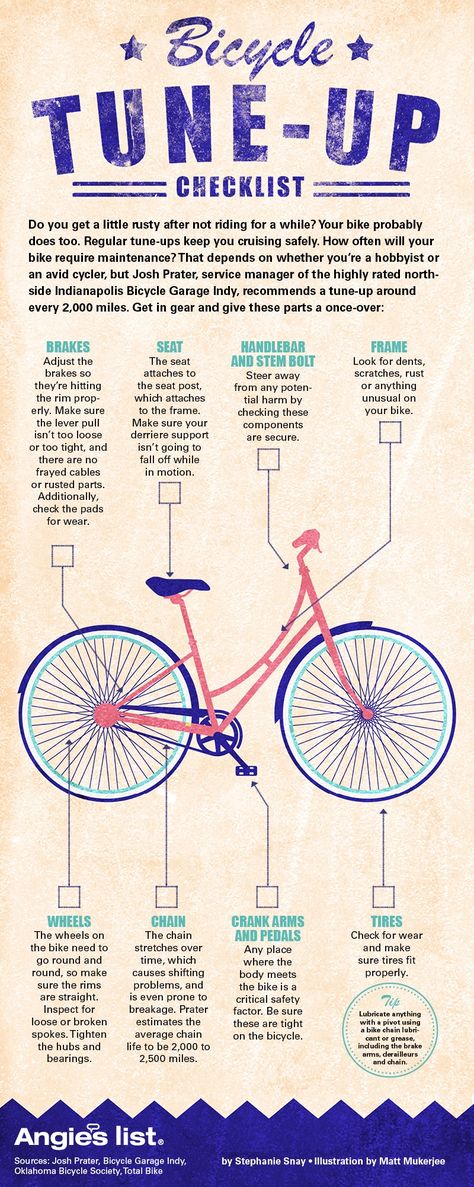 Look at the sidewalls as well as the tread.
Look at the sidewalls as well as the tread.
I get about 2,500 miles on a Continental Grand Prix 4000S, high end road tire. The rear tire always goes first. Then I rotate the front tire to the rear, and put the new tire on the front. I have never had to replace a front tire due to tread wear.
Some Continental tires also have wear indicators - two small dots in the tire - to let you know when the tread is gone. From there I get the figure of 2500 miles; it takes me about the same amount of time to get to the point where the wear indicators are removed.
Sourcenycvelo
2017-08-18 18:41:28 +0000
Fronts rarely wear out in the life of the bike as such, but they do age, harden and eventually delaminate. That being said, turn to replace the rear so that your new tire is your steering tire and the aging one is the ride tire (which will be used up). Schwalbe is right on tire mileage, premiums - but many of your "nameless cheap imports" have tire life measured in hundreds of miles, not thousands, so keep in mind that Schwalbe-Michelin-Continental-Panaraser is worth the price! Decent mid-range brand tires name good for 1500-2500 miles, road miles, with things like road quality, weather (wet roads wear tires more, actually, due to slippage), biker weight, and riding style (no MTBs can be realistically evaluated). On a "desert note" (where spikes called "goat heads" roam freely, also keep in mind that while you can add rhinoliners, pipe sealant, spikes, kevlar tires, in the end you're going to "get" While a small stud is not life lasting for the stud to prevent later fiber separation in the stud belt, it is VERY wise to find the hole and use either rubber cement or super glue to "fill" the stud hole - keep the hole closed. not to seal the air but to help restore some integrity to the tire structure after the stud pierces it... the rider's solution is here, but I've never had a "failure separation fiber" while I've had tubes that go out to tire exchange that literally had TABLES little green dots on them!(where Slug filled the "goat's head" in the spike hole).
Schwalbe is right on tire mileage, premiums - but many of your "nameless cheap imports" have tire life measured in hundreds of miles, not thousands, so keep in mind that Schwalbe-Michelin-Continental-Panaraser is worth the price! Decent mid-range brand tires name good for 1500-2500 miles, road miles, with things like road quality, weather (wet roads wear tires more, actually, due to slippage), biker weight, and riding style (no MTBs can be realistically evaluated). On a "desert note" (where spikes called "goat heads" roam freely, also keep in mind that while you can add rhinoliners, pipe sealant, spikes, kevlar tires, in the end you're going to "get" While a small stud is not life lasting for the stud to prevent later fiber separation in the stud belt, it is VERY wise to find the hole and use either rubber cement or super glue to "fill" the stud hole - keep the hole closed. not to seal the air but to help restore some integrity to the tire structure after the stud pierces it... the rider's solution is here, but I've never had a "failure separation fiber" while I've had tubes that go out to tire exchange that literally had TABLES little green dots on them!(where Slug filled the "goat's head" in the spike hole). 0005 Source
0005 Source
Lance
2012-04-03 23:08:32 +0000
I usually get 4000 miles from Continental 4000S. Years ago I got 5,000 miles from a Performance brand tire. However, neglecting attention, in the middle of a cold December ride, the corps completely disintegrated. So keep looking for wear and tear.
SourceJKP
2017-09-25 12:37:14 +0000
I drove through the ring a couple of times on my motocross bike. The rear tire has about 15,000 miles and the front has almost 35,000 miles. She's been through floods, ice, mud, and just about any kind of weather imaginable. Signs of wear remained only halfway through the service life. As long as you take care of your bike and maintain the right air pressure while riding it, it will last a very long time.